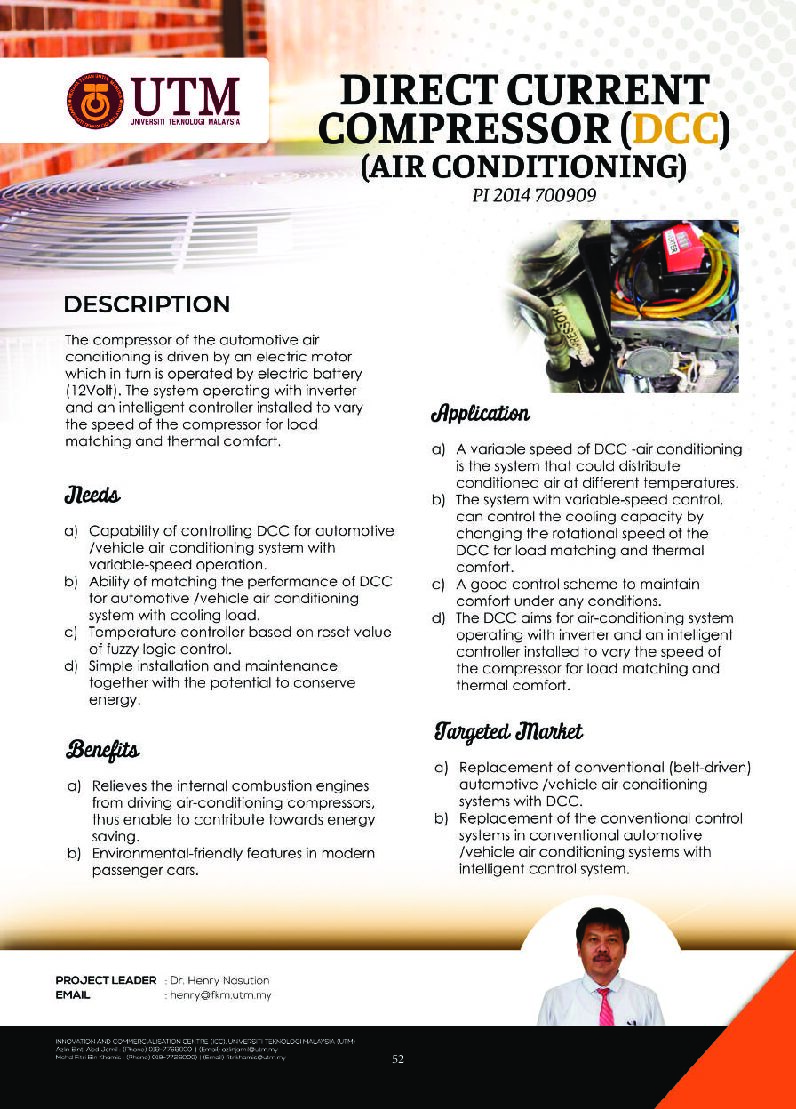direct current controller | air conditioning compressor | conventional control system | internal combustion engines
PRODUCT DESCRIPTION / FEATURES
The compressor of the automotive air conditioning is drive by an electric motor which in turn is operated by electric battery (12Volt). The system operating with inverter and an intelligent controller installed to vary the speed of the compressor for load matching and thermal comfort.

NEEDS
Capability of controlling DCC for the automotive/vehicle air conditioning system with the variable-speed operation.
Ability to match the performance of DCCfor automotive /vehicle air conditioning system with the cooling load.
Temperature controller based on the present value of fuzzy logic control.
Simple installation and maintenance together with the potential to conserve energy.
APPROACH
The automotive air conditioning compressor (AAC) is belt-driven by the engine. The compressor speed is directly proportional to the engine speed. Therefore, the cooling capacity will vary as the engine speed changes.
To meet the air conditioning (AC) demand, the compressor continually cycles on and off. In the research, the compressor of the AAC is driven by an electric motor which in turn is operated by electrical battery (12 volt).
The use of direct current compressor (DCC) is seen as a solution of the existing system. Using the proposed system, DCC gets significant improvements in energy efficiency.
Compared with AAC system, the energy conservation effect is about 77.5% to 86.35%.
BENEFITS
Relieves the internal combustion engines from driving air- conditioning compressors, thus enable to contribute towards energy saving.
Environmental-friendly features in modem passenger core
COMPETITORS
Replacement of conventional (belt-driven) automotive/vehicle air conditioning systems with DCC.
Replacement of the conventional control systems in conventional automotive/vehicle air conditioning systems with the intelligent control system
PROJECT LEADER
Dr. Henry Nasution
henry@fkm.utm.my




